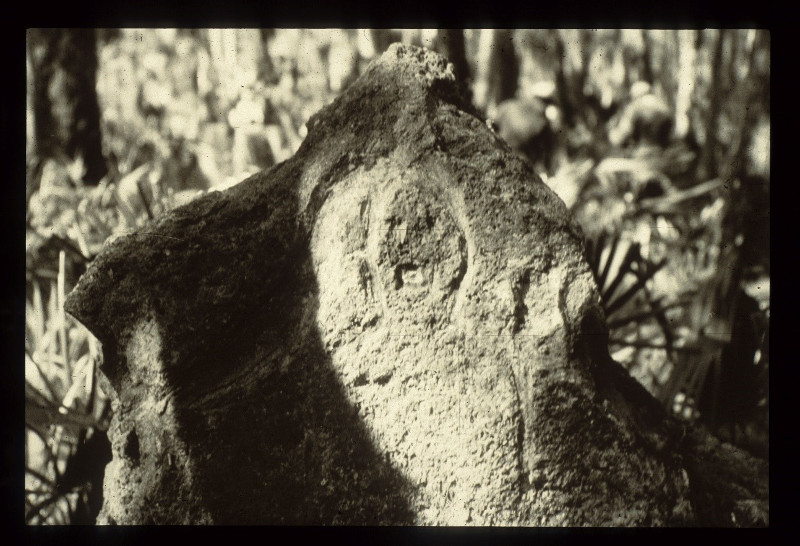The famous Crystal River site became a Florida state park in 1962 to preserve the renowned Native American archaeological mounds found there. In 1964, as the site was prepared for the addition of trails and construction of the museum building, two large lime rock stones of significant size were discovered. These stones were believed by archaeologist Ripley Bullen to be stelae, carved or inscribed stone slabs or pillars used by ancient peoples for commemorative purposes. Bullen believed the first stele was a ceremonial stone and purposely erected for ceremonial and celestial purposes. Located 75 yards east of the main burial complex, it dates to approximately 440 A.D. Bullen believed that the human form carved into the stone was of great significance and was not unlike other carved stones found at pre-Columbian sites in Mexico and Central and South America.

The areas around both stelae were explored, and after some time the team of archaeologists discovered caches of chert chips and food remains at the first rock, which indicate offerings were left for the dead at the site. The second stele, by comparison, is not quite as spectacular. At first glance it seems to be an irregular limestone rock with a straight western and a concave eastern side. What is most distinctive about it is that it was purposely set upright and is very rectangular, meaning it was shaped by human tools. We can only guess at its uses and significance to the people formed it.
These pieces of rock offer us a rare and exciting insight into some of Florida’s first peoples, and we can only hope that more light will eventually be shed on this fascinating chapter in our history.
